In the next five years, 32 million women, the tail end of the baby boom population curve, will begin to sweat. Not in anticipation of some looming, sci-fi apocalypse, but as they reach the transition from perimenopause to menopause, with flushes of heat by day and drenching sweats by night. Add to that dwindling libido, an expanding waistline in spite of a seemingly sparse diet, bouts of weeping, a befogged memory, and a mirror harshly revealing bristly, sprouting chin hairs and once lustrous hair, now a bit drab.
Menopause, isn't there an app for that yet? End Your Menopause Misery, is the next best thing.
A 2011 study in the Proceedings of the National Academy of Sciences revealed that a surprising 25 percent of our Neanderthal sisters lived past the age of 40, contrary to earlier evidence of a far shorter lifespan. Anthropologists don't know if these elderly Neanderthal women went through menopause, but women's experiences today may not be much different, 40,000 years later. While women throw off down comforters rather than animal skins in the middle of night sweats, this symptom and others are timeless and women continue to experience them with a mix of alarm and confusion.
Escalating dry cleaning bills and outsized loads of laundry are a real, but less discussed aspect of the menopausal transition, as women's bodies betray them by sweating and leaking, always it seems, at the most inopportune times. The rush of heat to the face and torso in the middle of the day or rivulets of sweat by night can mean discomfort, inconvenience, interrupted sleep and more time spent changing clothes and bedding.
While hot flashes and night sweats were once believed to be a part of vascular problems occurring when women's hormone levels decline, a review of medical information from 60,000 women who took part in the Women's Health Initiative Observational Study showed that women who had hot flashes early in menopause had fewer cardiovascular events than women who had them late in menopause or not at all. No one understands the exact mechanism behind hot flashes. One theory is that your body's waning production of estrogen interferes with the function of the hypothalamus, the area at the base of your brain that regulates temperature. Your body heat doesn't actually spike, but your brain responds as if it did, so the blood vessels underneath your skin dilate in order to cool you down.
Let's look at other ways to keep your circulation steady that don't require mopping your brow or changing your sheets. What you had for lunch could have triggered that afternoon outbreak of sweat, just as your dinner can be related to that damp 1:00 a.m. wakeup. Hot foods and spices, as well as alcohol, are notorious for bringing on a rush of heat and sweating in menopausal women.
Remember to eat to stay cool. When you enjoy spicy foods in Thai, Mexican, Indian or other restaurants, eat a smaller portion and balance it with a cooling green salad with cucumbers or a fruit salad with strawberries and watermelon sprinkled with chopped, fresh mint. And, wait until your food cools down a bit before you eat it. Hot flashes can be triggered not only by the heat of spices, but food that is very hot in temperature can also make you break a sweat. Even one cocktail or one glass of wine can bring on a bout of flushing and sweating. Swap out that celebratory toast for sparkling water or juice.
Move to stay dry. Your exercise routine also goes a long way in helping you to control hot flashes and night sweats. "But wait," you might say. "How does getting sweaty from exercise help me to stop sweating?" Exercise may diminish the surges of follicle stimulating hormone (FSH) that occur in midlife. FSH dilates the tiny blood vessels under the skin's surface. When blood rushes into the dilated capillaries, it feels like the room temperature is 98.6 degrees! Getting your heart rate and circulation up boosts your endorphin level too, which makes you feel better overall. Even moderate exercise appears to help ease the frequency and severity of hot flashes.
Stress worsens hot flashes -- as any woman who has felt herself beginning to drip during a high-pressure meeting or in the middle of a (literally) heated conversation knows. When that prickly, hot feeling starts to come on in an intense situation, take slow, deep breaths to keep your stress at bay. Excuse yourself for a restroom break, whether or not you need one, to diffuse the tension.
You can also help yourself with staying cool at night. Keep the ambient temperature in your room cooler. Add a quiet fan on a low setting to help keep the room from getting stuffy, which can trigger night sweats. In addition to a cool room, you may want to try a cooling pillow. They are made with gel-filled beads or crystals that are designed to stay cool during the night.
These simple changes may help you feel less damp and irritated as you go through your days and less prone to waking up in what feels like your own little pool at night.
Founder of Full Circle Women's Health in Colorado, Stephanie Bender has significantly contributed to a much larger understanding of women's health through her books, lectures and television appearances. Her most recent book is, "End Your Menopause Misery, " which she co-authorized with Treacy Colbert. You can post a comment or read more about Stephanie on her website, by clicking here. You can also follow her on Facebook by clicking here.